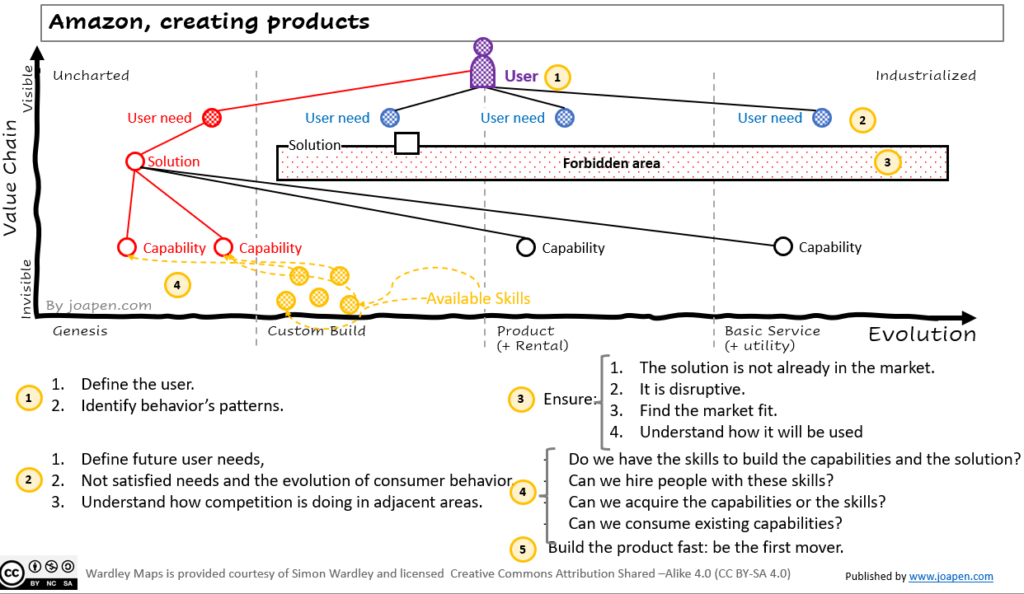These lines are written as notes from the book “Working backwards“. It focuses on how the authors described how they build products as Kindle, Fire…
You can perfectly tell me: this is done by many companies. And you are right. My point is to represent this process using Wardley Maps and highlight some important aspects of the process itself.
The basic steps
Assume you have a purpose, something you want to build (a disruptive product / service). We will focus on this context.
First, the focus on the user, how s/he behaves, how they interact with existing solutions related to the context.
Second, determine as best as possible the current needs of the user, how these current needs are being satisfied and potential gaps in terms of needs not satisfied.
Identify potential future needs the user does not have today but could have in future and how the user can satisfy them in a natural way (low friction).
Third, Think about the existing solutions that are in the market, find gaps, and avoid to build solutions adjacent to the existing ones. We can call it a “forbidden area”.
If you build a product adjacent to an existing product you will not differentiate enough and the competitor can add features to neutralize your new product. This will put you in a weak situation.
Fourth, you decide you can build a disruptive solution. If it’s really disruptive you do not have the capabilities, so the right question is: do you have the skills to build that capability?
In case you have not the skills, can you acquire them?
Fifth, once decided to go, do it quickly, as the competitors will try to avoid that you landgrab some segment. Try to be the first mover: the probability of being success will increase.
A Wardley Map to summarize

Gameplays
During this process we can identify different gameplays from the Wardley Map table of gameplays.
- Focus on user needs.
- Situational awareness: for understanding what not to build.
- Structure and culture: guiding principles.
- Exploiting networks effect: using amazon.com to quickly distribute the new product.
- co-operation: between different Amazon units.
- Patents and IPR: many of the disruptive products are protected with IP.
- Differentiation: avoid to build products adjacent to an existing one.
- Directed investment: once it’s decided it’s the right thing to build, the budget will be there to support the initiative.
- Experimentation: during these processes Amazon explores many different alternatives. Not all are valid, but there is learning behind them.
- Land grab: looking for conquer new spaces of the market.
- Be the first mover.
Any constructive feedback is always welcome!